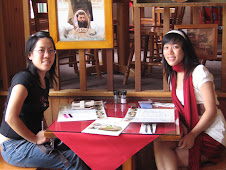 the pagoda shape ketapang tree
the pagoda shape ketapang tree
the ketapang tree
i have known this particular type of tree from my kampong days, having clear memories of this tree, which quite unlike others, shed its leaves during certain time of the year. it was a majestic tree, at least 35m tall, growing at the edge of the jewish cemetery, just next to a monsoon drain which was less than 50m from our house.
i just found out that ketapang leaves are sometimes known as indian almond leaves or huu kwang leaves. the kepatang trees are native to south east asia. the use of the leaves is the 'trade secret' why some fish breeders are so successful in breeding dicsus, bettas, angel fish, arowanas, and neons, etc, in malaysia and singapore.
the leaves, when left in the water, release organic acids like humic and tannins which lower the ph of the water, absorbs harmful chemicals and help create a soothing and calm environment for the fish.
soak one/two leaves in water for 48 hours, the ketapang leaves release a mild dye that turns the water tea-coloured. this solution, when added to the aquarium water, acts as a natural colour-enhancer and water conditioner that is most ideal for the fish. this addition is enough for up to 200l water tank per water change.
my good friend nah chuan has this idea that any dry old leaves will serve the same purpose. he keeps discus and he had tried this theory of his on his own fish.
found a number of ketapang trees at the sungei buloh wetland. if you visit qian hu at jalan lekar, you will find many ketapang trees within its compound.







No comments:
Post a Comment